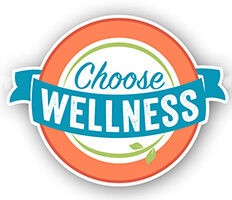If you are looking for ways to help lower your blood pressure and reduce the medications you need to control high blood pressure, here are some tips:
COUNT CALORIES: many people are not aware of how much food and calories they are actually consuming. Counting calories involves writing down what you eat, with true portions sizes so you can understand your calorie intake. Remember, beverages can be a significant contribution to calorie intake. There are many apps and websites that can help you count calories.
MONITOR SALT (Sodium) INTAKE: A diet high in sodium increases blood pressure in many people. The less sodium you eat, the better blood pressure control you might have. If you are unsure of your salt intake, track the sodium content in foods you eat. A goal should be to consume less than 2,300 milligrams (about 1 teaspoon of salt) each day. Ask your doctor if you should go lower, to 1,500 milligrams. Read the nutritional facts label on every food package. Avoid canned foods, processed foods, lunch meats, and fast foods. Use salt-free seasonings.
FOODS THAT CAN HELP: Potassium, magnesium, and fiber may help control blood pressure. Fruits and vegetables are high in potassium, magnesium, and fiber, and they’re low in sodium. Whole fruits and veggies are the best options. Nuts, seeds, legumes, lean meats, and poultry are good sources of magnesium.
- PRODUCE: radishes, rhubarb, spring peas, strawberries, Swiss chard, zucchini, peaches, pineapples, potatoes, raisins, spinach, squash, strawberries, sweet potatoes, tangerines, tomatoes, blueberries, beets, bananas, apples, apricots, broccoli, carrots, collards, green beans, dates, grapes, kale, lima beans, mangoes, melons, oranges.
- SEAFOOD: FRESH SALMON -Fatty fish are an excellent source of omega-3 fats, which have significant heart health benefits. These fats may help reduce blood pressure levels by reducing inflammation and decreasing levels of blood-vessel-constricting compounds called oxylipins.
- OATS: Oats are a whole grain that are a good source of carbs and fiber, including the powerful fiber beta-glucan.
- PUMPKIN SEEDS: are a great source of nutrients important for blood pressure control, including magnesium, potassium, and arginine, an amino acid needed for the production of nitric oxide, which is essential for blood vessel relaxation and blood pressure reduction.
- GREEN LENTILS: Lentils are rich in nutrients that help regulate blood pressure, such as fiber, magnesium, and potassium.
- PISTACHIOS: These nuts are highly nutritious and have been linked to healthy blood pressure levels. They’re high in a number of nutrients essential for heart health and blood pressure regulation, including potassium.
- TOMATOES: Tomatoes and tomato products are rich in many nutrients, including potassium and the carotenoid pigment lycopene. Lycopene has been associated with beneficial effects on heart health.
- FLAX and CHIA: These tiny seeds that are full of nutrients that can be helpful for healthy blood pressure regulation, including potassium, magnesium, and fiber.
DIET TO CONTROL BLOOD PRESSURE: DASH DIET: Dietary Approaches to Stop Hypertension (DASH) is an eating plan rich in fruits, vegetables, whole grains, fish, poultry, nuts, legumes, and low-fat dairy. These foods are high in key nutrients such as potassium, magnesium, calcium, fiber, and protein. The DASH diet can lower blood pressure because it has less salt and sugar than the typical American diet. The DASH diet cuts out desserts, sweetened beverages, fats, red meat, and processed meats. Ask your doctor or a dietitian to help you start the DASH diet. They can tell you how many calories you need each day to maintain or get to a healthy weight. And then they can help you plan meals with foods you enjoy that meet the DASH guidelines.
EXERCISE: Exercise is one of the keys to lowering your blood pressure. Working out also boosts the effectiveness of blood pressure medication if you’re already being treated for hypertension. Find activities you enjoy, and aim for 30 minutes a day of “exercise” on most days of the week. Going to the gym Is not the only option- dancing, gardening, swimming, raking leaves, walking the dog, hiking, yoga- anything else that gets your heart beating a bit faster. If you need motivation, try a personal trainer, a workout buddy or home videos or apps. Do not forget to include strength training; you can use weights, weight machines, exercise bands, or your own body weight by doing abdominal crunches or curl-ups. Even losing 10 pounds can help lower blood pressure. Some heart medications such as beta-blockers or calcium channel blockers can slow your heart rate. Talk to your doctor and ask what your target heart rate zone should be during exercise if you take these medications. Talk to your doctor before starting any exercise program.
Resources: Healthline and WebMD

